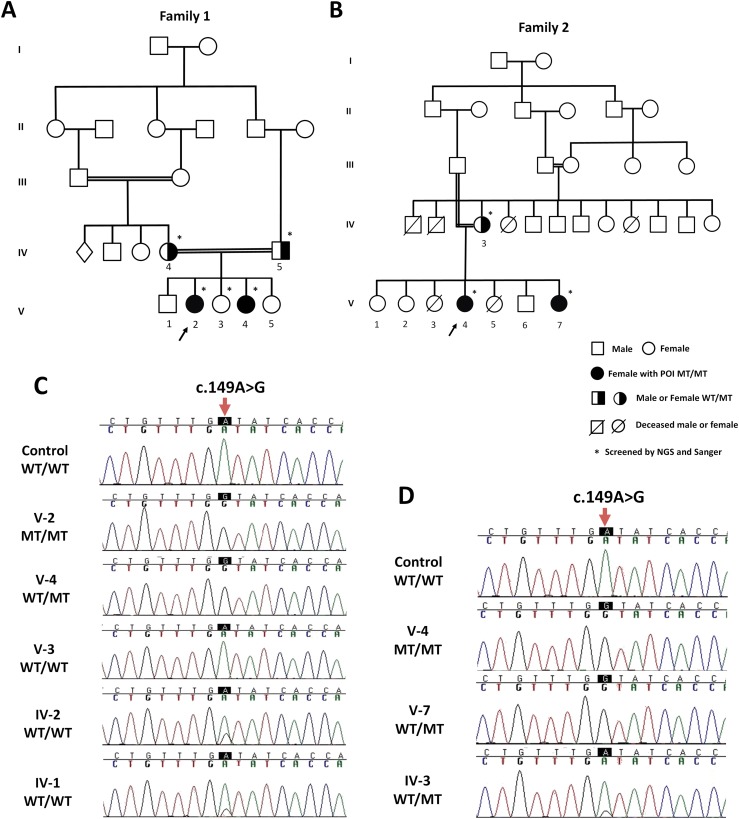Figure 1.
Pathogenic homozygous mutation in POLR3H identified in two unrelated families. (A, B) Family pedigrees. The arrows indicate the probands (F1: V-2 and F2: V-4). Pedigree numbers of individuals are indicated above the symbols. The asterisk indicates samples used for whole-exome and Sanger sequencing. (C, D) The electropherogram confirmed homozygous c.149A>G (red arrow on nucleotide peak of interest) in all affected women (F1: V-2 and V-4; F1: V-4 and V-7), heterozygous mutation in their parents (F1: IV-4 and IV-5; F2: IV-3), and absent in unaffected sister (F1: V-3). WT denotes the wild-type allele and MT indicates the c.149A>G mutation.

